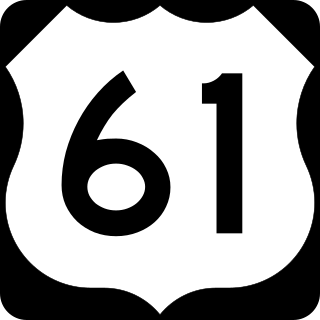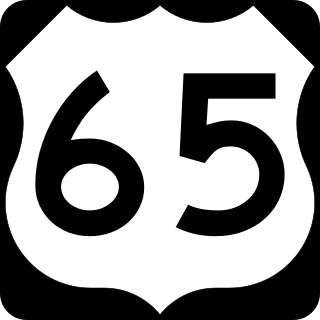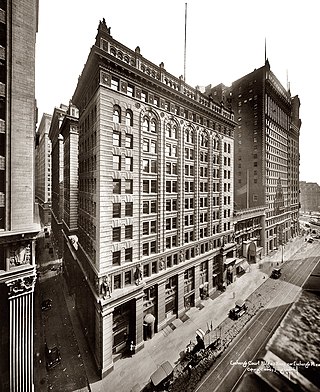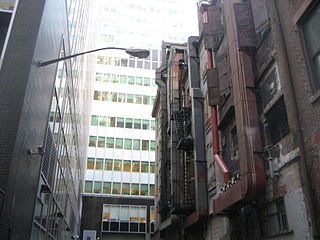
Interstate 40 (I-40) is a major east–west transcontinental Interstate Highway in the southeastern and southwestern portions of the United States. At a length of 2,556.61 miles (4,114.46 km), it is the third-longest Interstate Highway in the country, after I-90 and I-80. From west to east, it passes through California, Arizona, New Mexico, Texas, Oklahoma, Arkansas, Tennessee, and North Carolina. Its western end is at I-15 in Barstow, California, while its eastern end is at a concurrency with U.S. Route 117 (US 117) and North Carolina Highway 132 (NC 132) in Wilmington, North Carolina. Major cities served by the interstate include Flagstaff, Arizona; Albuquerque, New Mexico; Amarillo, Texas; Oklahoma City, Oklahoma; Little Rock, Arkansas; Memphis, Nashville, and Knoxville in Tennessee; and Asheville, Winston-Salem, Greensboro, Durham, Raleigh, and Wilmington in North Carolina.

Interstate 55 (I-55) is a major Interstate Highway in the central United States. As with most primary Interstates that end in a five, it is a major cross-country, north–south route, connecting the Gulf of Mexico to the Great Lakes. The highway travels from LaPlace, Louisiana, at I-10 to Chicago, Illinois, at U.S. Route 41, at McCormick Place. The major cities that I-55 connects to are New Orleans, Louisiana; Jackson, Mississippi; Memphis, Tennessee; St. Louis, Missouri; and Chicago, Illinois.

U.S. Route 61 or U.S. Highway 61 (U.S. 61) is a major United States highway that extends 1,400 miles (2,300 km) between New Orleans, Louisiana and the city of Wyoming, Minnesota. The highway generally follows the course of the Mississippi River and is designated the Great River Road for much of its route. As of 2004, the highway's northern terminus in Wyoming, Minnesota, is at an intersection with Interstate 35 (I-35). Until 1991, the highway extended north on what is now Minnesota State Highway 61 through Duluth to the Canada–U.S. border near Grand Portage. Its southern terminus in New Orleans is at an intersection with U.S. Route 90. The route was an important south–north connection in the days before the interstate highway system.

The South Street Seaport is a historic area in the New York City borough of Manhattan, centered where Fulton Street meets the East River, and adjacent to the Financial District, in Lower Manhattan. The Seaport is a designated historic district, and is distinct from the neighboring Financial District. It is part of Manhattan Community Board 1 in Lower Manhattan, and is bounded by the Financial District to the west, southwest, and north; the East River to the southeast; and the Two Bridges neighborhood to the northeast.

A flea market is a type of street market that provides space for vendors to sell previously owned (second-hand) goods. This type of market is often seasonal. However, in recent years there has been the development of 'formal' and 'casual' markets which divides a fixed-style market (formal) with long-term leases and a seasonal-style market with short-term leases. Consistently, there tends to be an emphasis on sustainable consumption whereby items such as used goods, collectibles, antiques and vintage clothing can be purchased.

U.S. Route 65 is a north–south United States highway in the southern and midwestern United States. The southern terminus of the route is at U.S. Route 425 in Clayton, Louisiana. The northern terminus is at Interstate 35 just south of Interstate 90 in Albert Lea, Minnesota. Parts of its modern route in Iowa and historic route in Minnesota follow the old Jefferson Highway.

Front Street is an east–west road in downtown Toronto, Ontario, Canada. First laid out in 1796, the street is one of the original streets of the Town of York. The street was laid out along the shoreline of Lake Ontario as it existed during that time. It remains an important street, with many important uses located along it, including the St. Lawrence Market, Meridian Hall, Union Station and the Metro Toronto Convention Centre. The eastern section of Front Street, in the West Don Lands, east of Cherry Street, is being rebuilt as a broad tree-lined boulevard, intended to be the pedestrian-friendly commercial spine of the new neighbourhood.

The Battle of Golden Hill was a clash between British soldiers and the Sons of Liberty in the American colonies that occurred on January 19, 1770, in New York City. Along with the Boston Massacre and the Gaspée Affair, the event was one of the early violent incidents in what would become the American Revolution.

The 1835 Great Fire of New York was one of three fires that rendered extensive damage to New York City in the 18th and 19th centuries. The fire occurred in the middle of an economic boom, covering 17 city blocks, killing two people, and destroying hundreds of buildings, with an estimated $20 million of property damage.

Liberty Street is a street in New York City that stretches east-west from the middle of Lower Manhattan almost to the East River. It borders such sites as 28 Liberty Street, the Federal Reserve Bank of New York Building, Liberty Tower, the Chamber of Commerce Building 140 Broadway, One Liberty Plaza, Liberty Plaza Park, the World Trade Center, Brookfield Place, Gateway Plaza, Liberty Park, and the North Cove Marina. A FDNY Firehouse, Engine Company 10 and Ladder Company 10, is located at 124 Liberty Street, directly across from the World Trade Center.

The 18th century was a period of rapid growth for London, reflecting an increasing national population, the early stirrings of the Industrial Revolution, and London's role at the centre of the evolving British Empire. By the end of the century nearly one million people lived in London, about one tenth of the population of Great Britain. By 1715, London's population reached an estimated 630,000 people, roughly equaling that of Europe's largest city until that time, Paris. Within a few years London itself was the largest city in Europe, reaching 750,000 people by 1760 and 1 million by the end of the century.

Maiden Lane is an east–west street in the Financial District of the New York City borough of Manhattan. Its eastern end is at South Street, near the South Street Seaport, and its western end is at Broadway near the World Trade Center site, where it becomes Cortlandt Street.

Coenties Slip is a street in the Financial District of Manhattan in New York City. It runs southeast for two blocks in Lower Manhattan from Pearl Street to South Street. A walkway runs an additional block north from Pearl Street to Stone Street.
The following is a timeline of the history of the city of Little Rock, Arkansas, USA.

32 Old Slip, also known as One Financial Square, is a skyscraper in the Financial District of Lower Manhattan in New York City. Completed in 1987, the building has 36 floors and stands at 575 ft 0 in (175.26 m). 32 Old Slip was designed by the firm of Edward Durell Stone Associates for developer Howard Ronson and his firm HRO International. It is home to various office tenants, including a Convene convention center and the New York Regional Office of the United States Census Bureau. The ground floor houses the New York City Fire Department (FDNY) Engine Company 4 and Ladder Company 15.

52 Broadway, formerly known as the Exchange Court Building or Chemical Bank Building, is a high-rise building on Broadway and Exchange Place in the Financial District of Lower Manhattan, New York City. The building was originally built with 12 floors in 1898 by architects Clinton and Russell, but it was gutted and stripped of its entire facade in 1980-1982 by Emery Roth & Sons. It is now 221.5 feet (67.5 m) high with 20 floors.

Marketfield Street is a short one-way, one-block-long alleyway in the Financial District of Manhattan, New York City. The street begins as a southern branch of Beaver Street, then veers east and north, ending at Broad Street. Alternative past names include Exchange Street, Field Street, Fieldmarket Street, Oblique Road, and Petticoat Lane.
John Street is a street in Lower Manhattan. It runs north to south through the Financial District. It is one of the oldest streets in the city. Long associated with maritime activity, the street ran along Burling Slip. The slip was filled in around 1840, and the street widened. Besides a wharf, warehouse, and chandlery, the city's first permanent theatre, and the first Methodist congregation in North America were located on John Street. It was also the site of a well-known pre-Revolutionary clash between the Sons of Liberty and British soldiers, pre-dating the Boston Massacre by six weeks.

90–94 Maiden Lane is a cast-iron building on Gold Street between William and Pearl Streets in the Financial District of Manhattan, New York City. It was built in 1870-71 in the French Second Empire style and is attributed to Charles Wright.
The New-York Directory, published in 1786, was the first extant directory for New York City and the third published in the United States. It listed 846 names. A year earlier, the first two in the country were published in Philadelphia – the first, compiled by Francis White, was initially printed October 27, 1785, and the second, compiled by John Macpherson (1726–1792), was initially printed November 22, 1785.



















